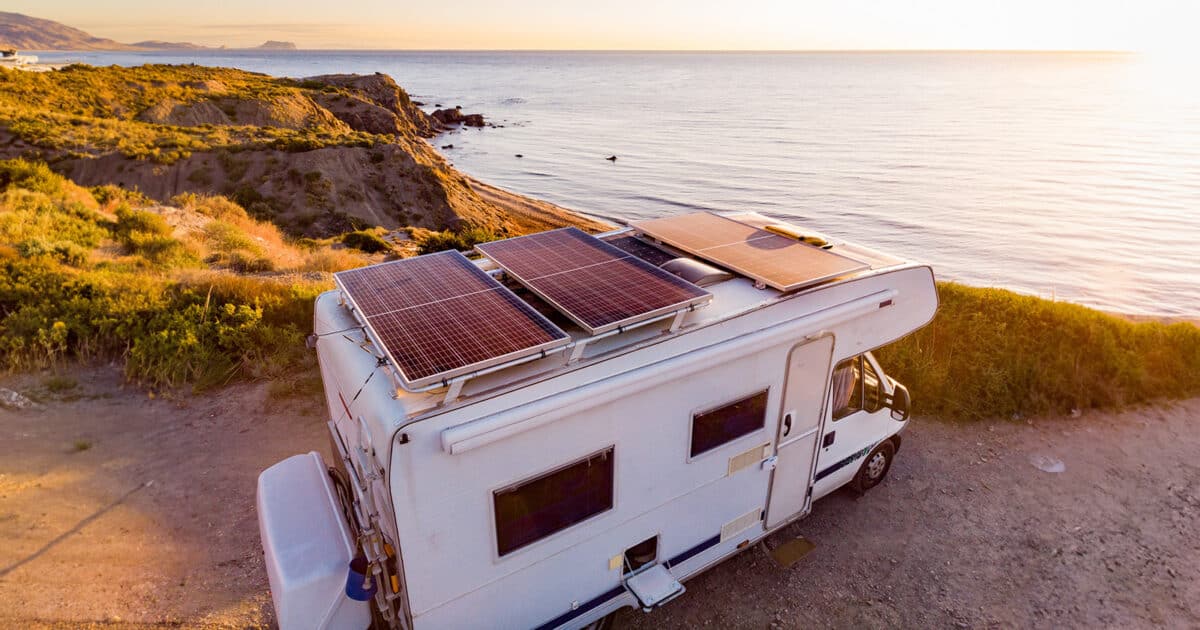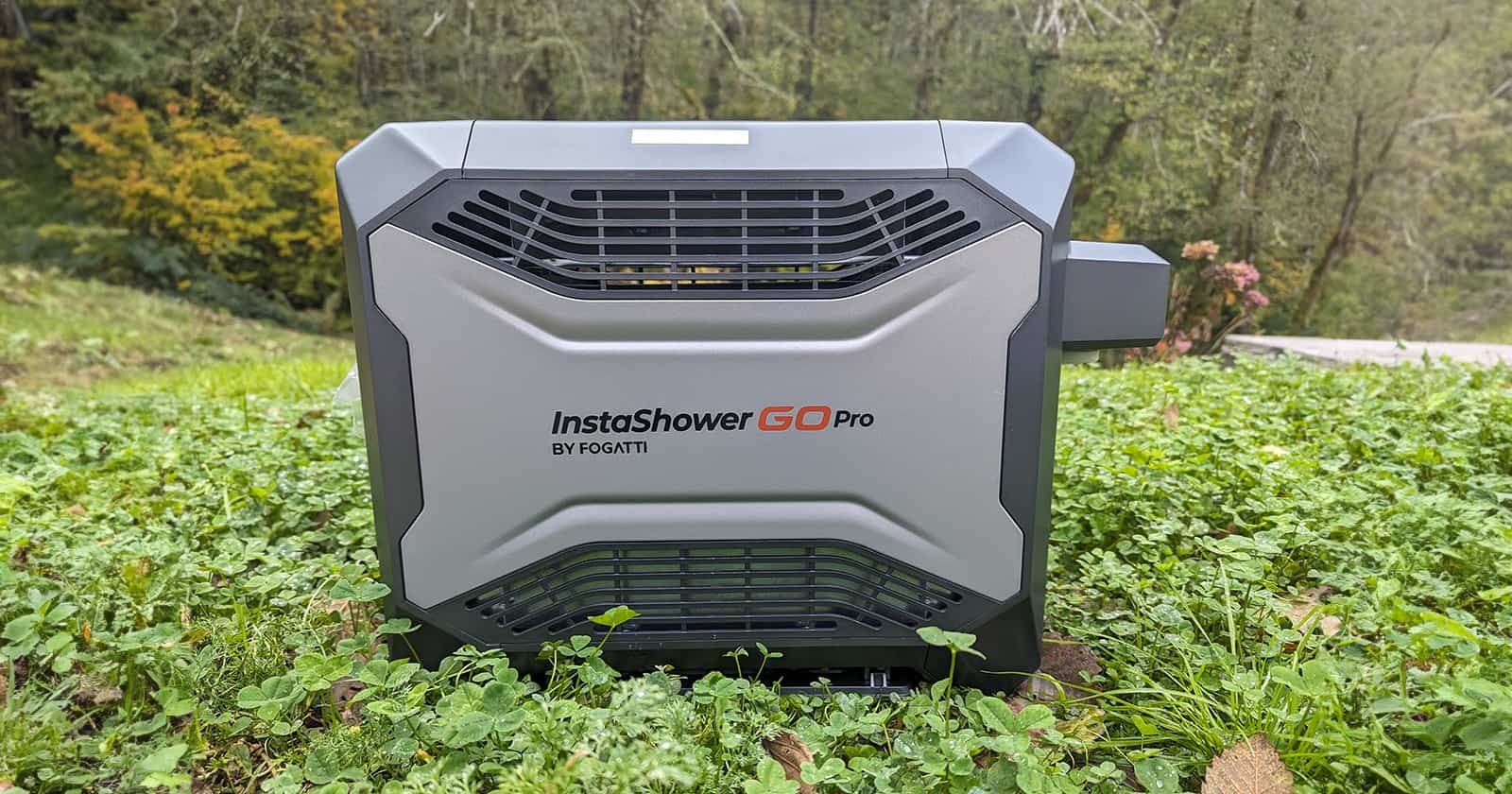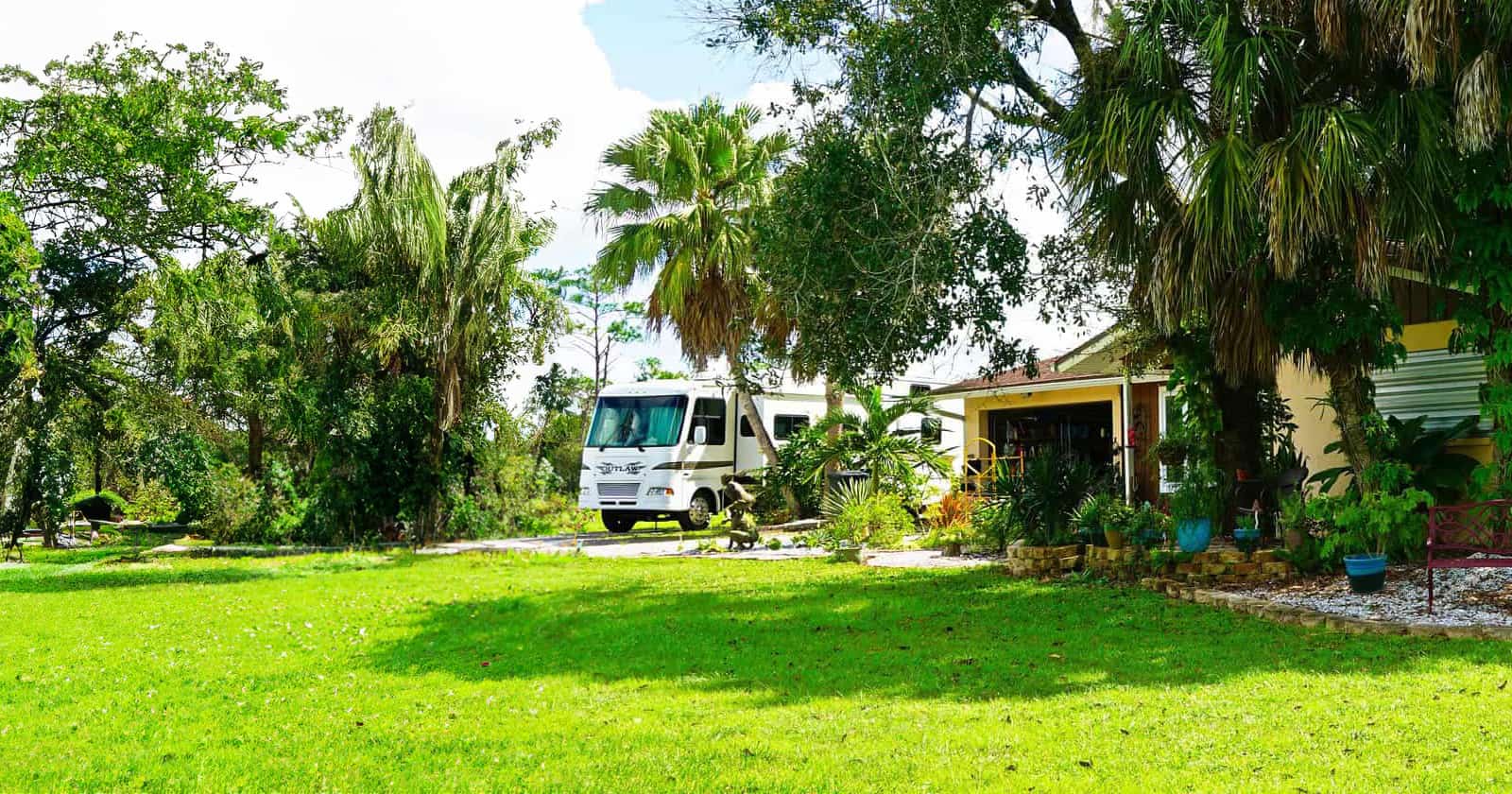The secret to a fulfilling boondocking journey lies in the gear you carry. It’s the line between a serene escape into off-grid living and a test against nature’s elements. Boondocking, or as it’s casually known, dry camping, is an exercise in self-sufficiency—forgoing the plugged-in perks of a campground and relying on your own resources. The key? Preparation and a thoughtful approach.
Imagine yourself amidst the vast, unoccupied stretches that make up nearly half of America, coffee in hand, mountain views ahead. In these moments, having the right gear ensures peace of mind. It’s all about being equipped, self-reliant, and ready to embrace the rural expanse that makes up 97% of our country. With preparation, your boondocking adventure becomes not just possible but also a joy.
Below, you will find both non-essential and essential gear considerations for those looking to become hardcore boondockers or even if you just plan on dipping your toes into the boondocking pool.
Non-Essential But Useful Boondocking Gear
While the basics are crucial for boondocking, certain non-essential items can enhance the enjoyment and comfort of your off-grid adventure. Incorporating a few select luxuries can elevate the experience from mere survival to a cozy retreat.
- Quick-Setup Outdoor Games: Ideal for entertainment and easy to pack away.
- Board Games: Perfect for entertainment on rainy days.
- Starlink Internet Services: Keeps you connected even in remote locations.
- Portable Outdoor Speakers: For music lovers who want to bring their tunes into the wilderness.
- Extra-Thick Blankets: Provide warmth on chilly nights without the need for electricity.
- 12-Volt USB Adapters: Essential for charging devices with your RV’s battery.
- Solar-Powered Yard Lights: Offer ambient lighting that’s easy to install.
- 12-Volt Box Fan: Creates airflow and cools down your space efficiently.
- Compact Inverter: Powers small electronics and charges devices, minimizing energy use.
Smart packing is key—aim to use space efficiently and keep your load within 80% of your Gross Vehicle Weight Rating (GVWR) to ensure safety and mobility. Some items, like thick blankets and a box fan, can be surprisingly functional, providing comfort while conserving energy. A small inverter is a versatile tool for charging electronics, highlighting that some non-essentials may indeed become essentials, depending on your needs and power management strategies.
Essential Boondocking Gear
Now that advantages and non-essentials are out of the way, it’s time to get down to the nitty-gritty of essential boondocking gear. If you’re about to head out on your very first off-grid adventure, the idea of being wholly dependent on yourself may be a tad intimidating.
However, as long as you take care of the essentials, your first outing will largely be successful. There are always going to be bumps in the road here and there. But, with our list, you can minimize the damage and allow yourself more room to think outside the box when you need to.
1. Power Options

Just because you don’t have shore power doesn’t mean you can’t create a grid-independent powerhouse of an RV that is wholly able to stand on its own. You just need the right gear. While primarily boondocking will save you a lot of money on your many journeys, this part will not.
When it comes to powering your RV, the upfront cost is often substantial. However, in the long run, it will level out, and you’ll start making gains on your investment. You’ll need an inverter as well, especially if you are highly dependent on battery power. Inverters convert your DC voltage to AC voltage, so you can use your power outlets throughout the RV.
Generators
This is your number one source of power under most circumstances and the best way to consistently power your RV away from shore power. Depending on your choice of generator, they run on diesel, gasoline and propane. There are advantages and disadvantages to all of them because that’s just the way the cookie crumbles.
The good news is that they’re relatively inexpensive, especially if you’re rocking a smaller RV or a teardrop. Expect to pay anywhere between $250 and $1,000. You can always go higher, but at some point, the potential gains outweigh the needs. The most important number to remember when it comes to generators is the wattage. The higher the watts, the higher the power production.
Pros of Generators:
- Generators are fairly affordable.
- They provide instantaneous power production the moment you need it.
- Generators will power your most power-hungry appliances.
- Most generators have plenty of safety features to prevent overloads.
- They’re typically easy to transport and store when you don’t need them.
Cons of Generators:
- Fuel generators require fuel, and that means you have to replace it from time to time.
- They’re often loud.
- The cost of fueling your generator can potentially outweigh the cost of a campground.
Solar Power
When most people think about solar power, they think about solar panels for obvious reasons. However, solar power is a two-part system, and it’s easy to forget the battery bank that has to come with it. Not only do you require some solid, dependable panels, but you also need a reliable, powerful battery bank.
This can get quite expensive as well, especially if you invest in lithium batteries for your battery bank. The good news is that if you have the money to combine lithium batteries with strong solar panels, you will have a fantastic power source that nearly rivals a full-blown generator.
Pros of Solar Power Systems:
- You get free energy all day long.
- Solar systems are generally easy to set up.
- While not entirely maintenance-free, they’re largely a low-maintenance setup.
- No odors from exhaust fumes.
- They operate without producing any noise.
Cons of Solar Power Systems:
- They can be very expensive upfront, especially if you opt for lithium batteries.
- Only the most expensive solar setups will regularly run power-hungry appliances.
- The sun doesn’t always shine, which can limit the power generation.
Wind Turbine
This is an interesting option that doesn’t receive much attention in the presence of generators and solar power options. Since wind turbines are on the low end of most RVer’s power needs, this is more of a companion power source that will effectively reduce your power consumption elsewhere.
However, on a windy day, a 500w wind turbine is worth its weight in gold. Plus, unlike solar or loud generators, it runs all night, nice and quiet-like, recharging those batteries for you.
Pros of Wind Turbines:
- The 500W to 800W range of wind turbines are fairly affordable.
- They generate power 24/7, so long as there is wind.
- Wind turbines make for a great companion power-source.
- Most wind turbines are easy to pair with a solar set-up.
- They are eco-friendly.
Cons of Wind Turbines:
- They are difficult to set up on the fly.
- Wind turbines can attract lightning in a bad storm.
- They lack the efficiency of solar power systems.
- The wind doesn’t always come out to play.
2. Water Storage and Filtration
Water is life. You have to have it, one way or the other. If you’re still in the “searching for the best RV” phase, and you primarily prefer boondocking, it’s in your best interest to get one with larger tanks.
The longer your water supply holds up, the longer you can stay off the grid. The same goes with dumping, which we’ll cover in more detail below. It’s not just for drinking. When you take into account washing dishes, your hands, and taking showers, fresh water becomes even more valuable.
It might surprise you to find that one of the best boondocking gear options out there is paper cups and plates with plastic cutlery. The water you’ll save from not doing the dishes adds up in a hurry. It’s preferable to opt for the compostable versions of these so as not to add plastic to landfills.
A water filtration system is a must if you intend to get water from unpurified sources, and you want to look for one that has 1 micron or less pore size. The Clearsource Ultra RV Water Filter System or the Clearsource Nomad are fantastic options, and they both work with your RV’s water pump.
3. Sanitation
Maximizing Water Efficiency While Boondocking
Embracing the boondocking lifestyle means maximizing the amount of time you can enjoy the wilderness without the frequent need to resupply. To extend your off-grid adventures, it’s essential to conserve water. Here are some eco-friendly tips and tricks to help you maintain your water supply, ensuring your boondocking experience is sustainable and enjoyable.
- Conserve Water with Dishwashing: Limit dishwashing to once per day. Use biodegradable soap and a small amount of water to reduce your impact on the environment.
- Opt for Compostable Tableware: Whenever possible, choose compostable plates, cups, and cutlery over traditional disposable ones. Not only does this help in conserving water that would otherwise be used for washing dishes, but it also reduces landfill waste, as compostable items can break down naturally.
- Laundry Water Usage: If your RV setup includes a washing machine, aim to use only 6 to 15 gallons per load. Selecting water-efficient models can make a big difference over time.
- Shower Smartly: Install a low-flow showerhead, ideally one that uses no more than 1.5 gallons per minute (GPM), to significantly cut down on water usage. Keep showers brief to conserve even more.
- Mindful Tap Use: Be conscious of your water use; avoid leaving the tap running when not in use. This simple habit can save gallons of water over the course of your trip.
- Toilet Etiquette: In the spirit of saving water, adopt the practice of ‘if it’s yellow, let it mellow; if it’s brown, flush it down.’
Organize Your Waste
Whether you choose compostable items or not, organizing your waste is crucial. Stack or crush your used plates and cups to maximize space in your trash or compost bin. This organization is not just about tidiness; it’s about respecting nature and leaving a minimal footprint behind.
Incorporating these eco-friendly practices into your boondocking routine can lead to a more sustainable and responsible way of enjoying the great outdoors. By reducing water usage and opting for compostable items, you contribute to preserving the natural spaces you love to explore.
Waste
When you do have to dump your tank, some gas stations, camping stores, some truck stops, campgrounds, and some rest areas will have the hookups necessary. No matter where you boondock, it’s always a good idea to know the area and where you can dump.
If your RV doesn’t have a black tank or a combo black and gray tank for waste, you have a number of portable toilet options. One of the simplest is the cassette toilet, which detaches from the RV and is easy to handle and dump. However, it also places you upfront and personal with your inner..uh…we won’t go there. Suffice it to say, it’s not the most pleasant method.
Bucket toilets are similar, and both the bucket and the cassette variations fill quickly. Dry or composting toilets eliminate the sights and smells and take longer to fill — generally a month, give or take a week. Composting toilets also require no water, saving valuable water in your freshwater tank.
4. Safety Gear
No boondocking gear is complete without safety gear. In fact, this is probably the most important section out of all of them. A fire alarm, smoke detector, carbon monoxide detector, and fire extinguisher are the most obvious of the bunch, but there are a few more things you should add to the list as well.
- Emergency flares or LED flares
- Fix-a-Flat
- Tire pressure monitoring system
- Sway bar for travel trailers
- Gas stop (for propane)
- Roadside emergency tools
- First aid kits
- Wheel chocks
- Tow straps
- Duct tape (for everything)
- Jumper cables
- Tire chains for winter boondocking
That covers most of the essentials. Remember, safety gear is not just for when you’re set up and camping. It’s also for when you’re on the road. It’s best to sit down and think about the potential emergencies you might run into out there and pack accordingly.
Boondocking out in the middle of nowhere might expose you to the local wildlife as well. Consider packing bear spray. It’s not likely that a wild flock of turkeys will attack you, but bears can smell cooking food from a long way off.
It’s better to have bear spray or other wild animal deterrents so you don’t have to learn any lessons like that the hard way.
In the world of boondocking, being equipped with reliable navigation tools is non-negotiable. Traditional navigation methods, like the sighting compass, hold their own charm and reliability. However, in an age where we’re accustomed to digital convenience, there’s a tool that stands out for the tech-savvy boondocker.
The RV LIFE App is an indispensable addition to your boondocking gear when it comes to finding RV parks, dump stations, gas stations, and other notable landmarks. It’s a navigation app developed for RVers, featuring downloadable maps that are accessible offline. This means you can navigate confidently through remote areas, even without a cell signal.
While embracing modern technology, don’t overlook the value of a good old-fashioned map and compass. These tried-and-true tools are invaluable when electronic devices fail or run out of power.
For those who plan on heading farther off the beaten path, devices like the Garmin eTrex 10 or Garmin inReach Explorer Plus offer robust GPS functionality independent of cell towers. They’re equipped with locator SOS beacons, making them a safe bet for emergency situations.
Adding an altimeter to your toolkit is especially wise when exploring areas with significant elevation changes. Whether you’re in the Rockies or the Smoky Mountains, knowing your altitude can be crucial.
Combining traditional navigation skills with modern digital tools like the RV LIFE App ensures that you’re prepared for any situation, providing peace of mind as you explore the great unknown.
6. Communication
When you’re on your own, communication is essential, especially with family members and those you love. Smartphones aren’t the only way to communicate. Many of the places boondocking aficionados like to travel are sparse in terms of cell signal. Other forms of communication step to the forefront in these situations, one of which is radio. Walkie talkies are perfect for communicating with a central, two-way radio in the RV.
They’re cheap and reliably effective, sometimes for up to several miles. CB radios can work for longer distances but tend to draw more power. CB is also endlessly entertaining and has its own hardcore communities dedicated to its bandwidths.
A satellite internet service, such as Starlink, will provide you with Wi-Fi in your immediate area, allowing you to communicate via email, Wi-Fi calling, and text, so long as you are in the range of your router.
Before you head into a new area, look up the local radio frequencies for emergencies, not only to alert you of weather events and other emergencies but so you know what bands to communicate on if you’re in trouble.
7. Climate-Specific Boondocking Gear
We touched on this a little bit above as a part of the non-essentials. Some things are obvious and should be high on your list, such as thicker, warmer blankets in the winter and box fans in the summer that are light on the power consumption.
Automatic, temperature-controlled vent fans are always a big plus, especially if you find a nice, shady spot on a warm summer day.
Portable heaters are usually popular for colder climates, but it’s often difficult to find one that doesn’t draw too much power. The heating element requires much more than just spinning blades to circulate air. It’s an option, so long as you are careful with your power consumption.
On hot summer days, use the environment and your RV to your advantage. Set up camp in the shade and orient your RV to take advantage of the breeze. With open windows in the shade, even a mid-summer afternoon becomes more than tolerable.
8. Other Handy Boondocking Gear
A huge part of the entire boondocking experience is spending more time outdoors. No one goes boondocking so they can run a Mario Kart weekend marathon on a Nintendo Switch. Although that does sound like fun with the kiddos (iff applicable).
Outdoor leisure means collapsible furniture, lounge chairs, and hammocks. If it’s a particularly beautiful night (the night sky, well away from the ambient lights of the city and towns, is absolutely stunning), sleeping on a hammock is a fantastic idea.
Small coolers, collapsible grills, and collapsible gazebos are good ideas as well. While these items aren’t essential, they are essential for outdoor comfort, style, fun, and relaxation.
If you pick up a 1080p/4k, high-lumen projector, it will give a whole new meaning to a romantic movie night under the stars or a kid-friendly movie the whole family will enjoy.
Final Thoughts on Essential Boondocking Gear
In retrospect, a lot of the boondocking gear on this list seems sort of obvious. However, if it’s your first time in an RV, much less boondocking, it’s surprising how easy it is to forget these essential items.
The biggest focus is on spending time outdoors, basically the entire point of boondocking. Many of the items on this list facilitate that desire while adding a few layers of convenience. While you’re at it, look into purchasing a telescope as well.
You don’t have to be an astronomer to recognize the huge advantage of a telescope well away from the ambient light from civilization. Now is your chance to have the adventure you want to have.
Taking the right gear means it will be a fun one, a safe one, and most importantly, something you’ll return to again and again.




